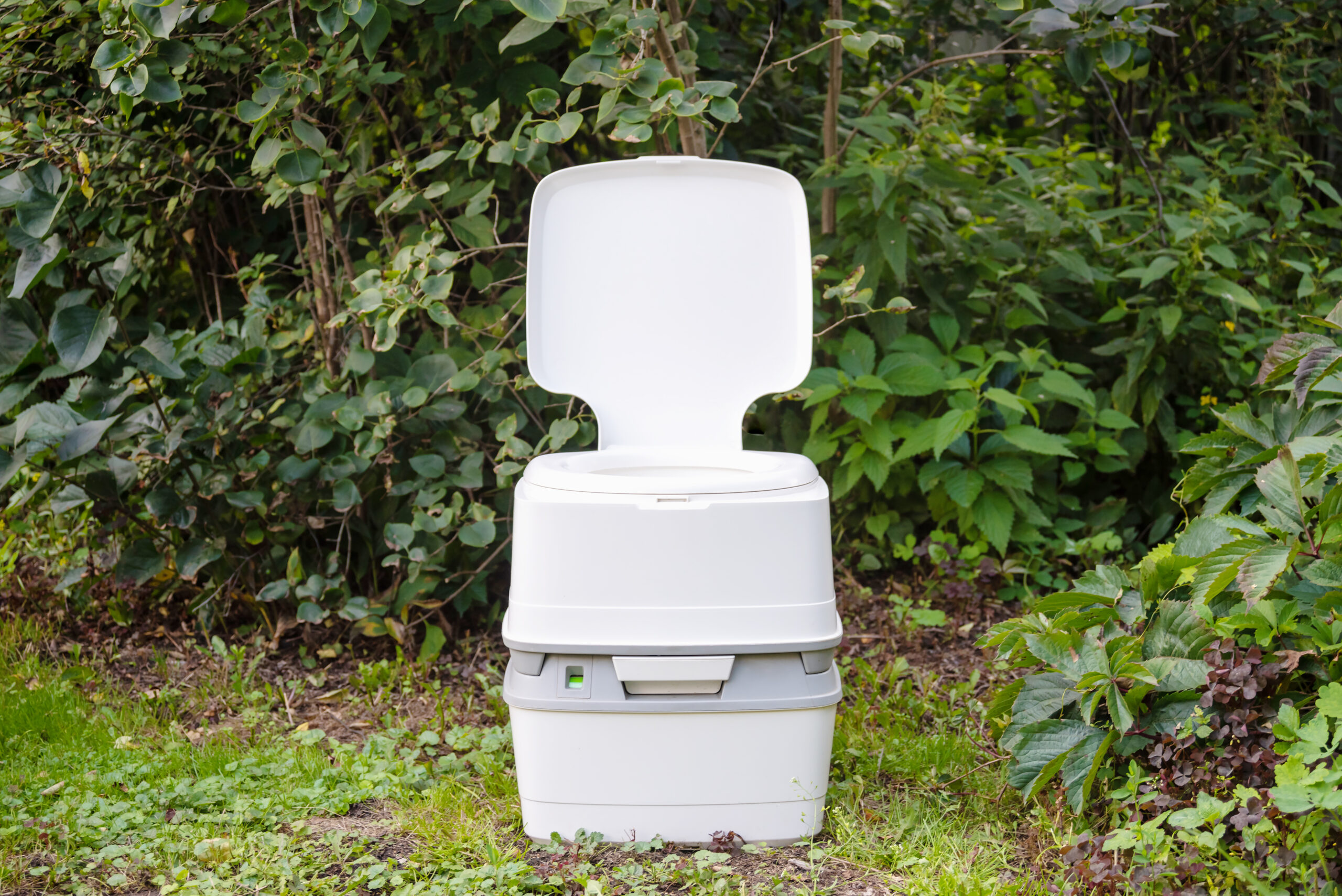
How Does A Composting RV Toilet Work?
If you’re looking for ways to cut down on your water consumption, you’ve probably heard of composting toilets. These are growing in popularity, especially among the eco-friendly RV crowd. These toilets are still a mystery to many people though, which begs the question: How does a composting RV toilet work?
These toilets still have the goal of disposing of waste in a safe and sanitary way, but they do it without water or traditional RV holding tanks. This enables RV owners to conserve water and dispose of their waste in a more environmentally-friendly way.
Below we’ll explain how the process works, the different types of composting toilets, and some pros and cons to consider before you buy one for yourself.
How does a composting RV toilet work?
Before we discuss the actual process that composting toilets use, it’s important to note that there are two main types of toilets: single chamber toilets and multi-chamber toilets. Each type uses a slightly different process to break down waste, but the mechanics are similar either way.
RV composting toilets work by removing moisture from waste, reducing odor, and converting sewage into a safe-to-handle material. The goal is to remove moisture and introduce oxygen to help everything break down. If the waste is too wet, bacteria can thrive. This will break down the waste, but it will produce a strong odor and doesn’t turn into a helpful end product.
Composting toilets aim to turn waste into something safe and helpful! The waste is “flushed” into a chamber that contains a dry compost medium like sawdust or peat moss. To introduce oxygen, some toilets have a mechanism that allows you to turn or stir the compost. This helps it break down more quickly.
The end result can be used as safe fertilizer, or it can be left at RV dump sites. Once it has reached the final stage, it will have turned into a safe and biodegradable substance. Now that we know the goal and basic steps, let’s cover the differences of each type of toilet.
Types of RV composting toilets
Single Chamber Composting Toilets:
As the name implies, a single chamber composting toilet has one chamber for both solid and liquid waste. In this regard, it’s similar to a traditional toilet because nothing is separated out. Their design is more simple, but it can lead to a bad odor if too much liquid builds up.
This can be averted by adding natural desiccants like wood chips or ashes. If you can absorb liquid, the whole thing functions better.
Multi-Chamber Composting Toilets:
Multi-chamber toilets follow the same principles, but the main difference is they separate liquids from solids. This helps everything break down faster and reduces the risk of bad odors. With this format, you may have to dispose of liquid waste separately because it’s not a core part of the composting process.
These toilets are less likely to stink, so many people find that they are worth a little bit of extra effort.
Central system:
A central system toilet often needs to be built into an RV because it includes multiple parts. There is an outer toilet mechanism that people can use and a separate storage/compost area. They are somewhat similar to traditional toilets in this respect because waste is “flushed” into a new area and doesn’t sit in the main unit.
The storage compartment is usually stored somewhere under the toilet. Because of the added space, central systems can hold more waste and go longer spans of time in between cleanings. The larger design also means that they’re harder to fit into RVs.
Self-contained system:
A self-contained system is a much smaller composting toilet. These don’t have to be connected to any separate storage tanks because the composting compartment is located right under the toilet seat. They are much smaller as a result but also more suitable for an RV.
Pros and cons of composting toilets
Now that we’ve discussed how a composting RV toilet works, let’s talk about some pros and cons of these toilets. Most of us are used to traditional ones that use water to flush and holding tanks to store waste.
Many RVs come with these standard toilets built-in, and composting models are not currently the norm. This means there are some benefits and drawbacks that must be weighed before you commit to installing a whole new system into your RV.
Pros:
- Use less water: One of the biggest benefits of a composting toilet is it helps conserve water. If you’re camping off-grid, it’s important to make your water last.
- Eco-friendly: Untreated human waste is dangerous to us and the environment. Composting toilets help turn it into a safe substance that won’t cause any damage if it’s dumped outdoors.
- Useful end product: In addition to being non-harmful, the compost is useful! It can be used as fertilizer for gardens and flower beds. You can turn waste into something good with minimal effort.
- Some models are portable: If you use a self-contained toilet, you won’t need to go through a lengthy installation process. You also won’t need to use the black tank in your RV, which is a benefit for many people.
Cons:
- Not every composting toilet fits in an RV: Of course, some toilets are larger than others. If you use a central model, you’ll need to figure out a way to integrate a separate holding tank into your RV. Some self-contained models are also quite large and may not fit into small bathrooms.
- Can cause bad odors: If there is a lot of liquid in your toilet, it can lead to foul odors that are hard to get rid of. You can reduce or cover these smells with wood shavings and cleaning sprays, but it might keep coming back.
- Fairly expensive: Some composting toilets cost $1000 or more. Although they may save you money over time, this initial cost can be quite off-putting.
- More hands-on: If you use a composting toilet, you’ll eventually have to get face to face with your own waste. This grosses many people out, and they would prefer to keep it out of sight and out of mind.
Best Composting RV Toilets
Answering how does a composting RV toilet work is fairly simple! But when it comes to actually picking the right model for your camper, things can get tricky. There is no one-size-fits-all solution, but here are some models that have worked well for RV owners.
- Sun-Mar Mobile Composting Toilet
- Nature’s Head Composting Toilet
- OGO Composting Toilet
- Separett Composting Toilet
These models are all fairly expensive, but that’s the standard for composting toilets. If you’re interested in owning one, these brands are a good place to start your search.
RVers looking for valuable how-to information have learned to go to the experts. Forums such as iRV2.com and blog sites like RV LIFE, Do It Yourself RV, and Camper Report provide all the information you need to enjoy your RV. You’ll also find brand-specific information on additional forums like Air Forums, Forest River Forums, and Jayco Owners Forum.
Related articles:



